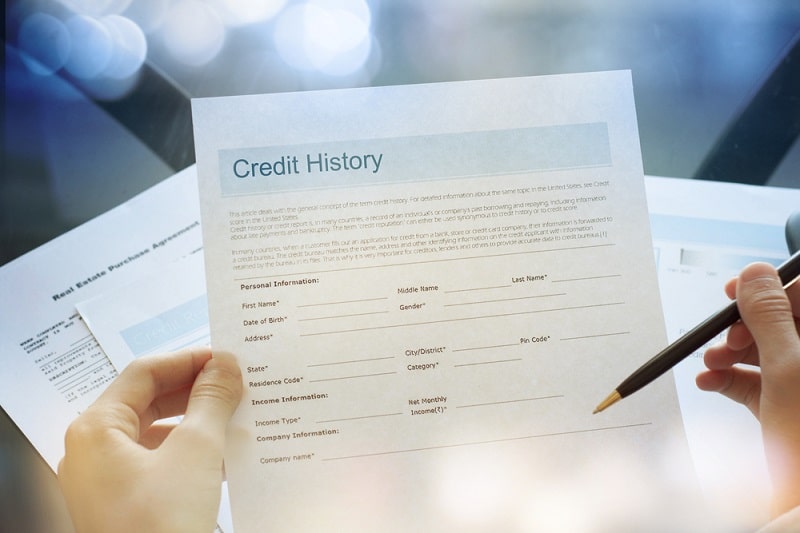How to Remove Public Records from Your Credit Report
Finding a public record on your credit report is never a good surprise. It could be a bankruptcy, a tax lien, or a civil judgment—but no matter the type, it can drag down your credit score and make it harder to get approved for loans, apartments, or even certain jobs.

The good news is, you’re not stuck with it forever. Whether the public record is wrong or just outdated, there are steps you can take to remove it from your credit reports—or at least lessen its impact.
What Is a Public Record on Your Credit Report?
A public record is any legal action tied to your name and finances that gets filed with a court. If the case involves money you owe, there’s a good chance it could end up on your credit report. These records can lower your credit score and make lenders think twice before approving you for credit, housing, or employment.
Not every legal matter will show up. If a dispute is settled privately or dropped before reaching court, it won’t be reported. But once a judgment is entered or a bankruptcy is filed, the damage can show up on your credit report for years.
What Types of Public Records Show Up on Credit Reports?
Public records on your credit report are legal filings that involve money you owe. They’re collected from local, state, or federal courts and can seriously hurt your credit score.
Here are the main types you might see:
- Bankruptcies – This includes Chapter 7, Chapter 11, and Chapter 13 filings. These are reported by the court and can stay on your credit report for up to ten years.
- Tax Liens – While the credit bureaus stopped reporting tax liens in 2018, older liens could still show up through third-party sources or specialty reports.
- Civil Judgments – These come from lawsuits where the court orders you to pay damages. Even if they no longer appear on the main credit reports, lenders may still find them in other databases.
Each of these records signals to lenders that you’ve had serious trouble with debt—and that’s why removing or resolving them matters.
Why Public Records Are Harder to Remove Than Other Credit Report Items
Most items on your credit report come directly from lenders—like missed payments, charge-offs, or collection accounts. These can usually be disputed through the credit bureaus with a simple letter or online form.
Public records are different. They don’t come from lenders. They come from the court system. That means the credit bureaus don’t verify them with a bank or creditor—they pull them from court databases, often through third-party data aggregators.
So when you try to dispute a public record, the credit bureau doesn’t just check with a creditor. They look at the court documents. If the filing exists and the details match, they’ll almost always keep it on your credit report.
That’s why public records are harder to remove. Unless there’s a mistake in how it’s reported—or the record has been vacated, withdrawn, or expunged—the credit bureaus are unlikely to take it off.
How to Dispute Public Records With the Credit Bureaus
If you think a public record on your credit report is inaccurate, you can file a dispute with each credit bureau that’s reporting it. Here’s how to do it:
- Get your credit reports: Start by ordering your credit reports from all three major credit bureaus: Equifax, Experian, and TransUnion. You can get free copies at AnnualCreditReport.com.
- Review the public record carefully: Check for errors in the date filed, case number, court name, dollar amounts, or status—like showing unpaid when it was already satisfied.
- Gather your supporting documents: This might include a court order vacating or dismissing the case, proof of payment or satisfaction of judgment, or a letter from the court confirming the record doesn’t exist.
- Write your dispute letter: Clearly explain what’s wrong and what you want corrected. Attach copies of your supporting documents. Don’t send originals.
- Send it by certified mail: Mail your dispute to each credit bureau reporting the error. Use certified mail with return receipt so you can track delivery.
- Wait for the investigation: Credit bureaus usually have 30 days to investigate. They may reach out to the court for verification. If they can’t confirm the details, they must remove the record.
- Follow up if needed: If your dispute is denied, and you still believe it’s inaccurate, you can send another letter or file a complaint with the Consumer Financial Protection Bureau.
How to Remove Specific Types of Public Records
The process for removing a public record depends on the type. Some records are easier to challenge than others, especially if there are reporting errors or if the issue has been resolved. Here’s how to approach the most common types.
Removing a Bankruptcy From Your Credit Report
If you see a bankruptcy on your credit report that doesn’t belong to you, the first step is to contact the court where the bankruptcy was supposedly filed. Ask for a written statement confirming there is no record of a bankruptcy in your name. Once you have that, send a dispute letter to each credit bureau along with a copy of the court’s response.
If the bankruptcy does belong to you, it’s harder to remove—but not impossible. Review the listing closely for errors. Common mistakes include incorrect dates, wrong case numbers, or inaccurate status updates. If you find one, dispute it with the credit bureaus. Even small details can be grounds for removal.
You can also request your full bankruptcy file through PACER (Public Access to Court Electronic Records) to compare it against what’s shown on your credit report.
Chapter 7 bankruptcies stay on your credit report for up to 10 years. Chapter 13 typically stays for 7 years. If yours has aged past those time limits, file a dispute to request removal.
Removing a Tax Lien From Your Credit Report
The credit bureaus stopped including tax liens in consumer credit reports in 2018. So if you see one on your report today, it may be coming from outdated records or a third-party source. Start by requesting updated copies of your credit reports from Equifax, Experian, and TransUnion. If the lien still appears, check the details for errors.
You can also file IRS Form 12277, which is a request to withdraw a federal tax lien. If approved, the IRS will update their records and may notify third-party reporting agencies that the lien was withdrawn. This doesn’t guarantee removal from all credit-related databases, but it can help reduce its visibility.
Make sure to include a statement on the form explaining why you're requesting withdrawal—especially if it relates to financial hardship or if the lien has been paid in full.
Removing a Civil Judgment or Lawsuit
Civil judgments were removed from the main credit reports by Equifax, Experian, and TransUnion in 2017 and 2018 due to accuracy concerns. But in rare cases, especially through third-party reporting, a judgment might still show up.
If you spot one, look for technical errors—wrong filing date, misspelled name, incorrect court name, or a case that’s already been paid or dismissed. If any of those details are wrong, send a dispute letter to the credit bureaus along with documentation to support your claim.
If the judgment was satisfied, include proof of payment from the court or a letter from the creditor confirming it’s been resolved. If the judgment was vacated, include a copy of the court order showing that it was overturned.
Once the credit bureaus receive your documents, they’re required to investigate and remove the record if it can’t be verified.
How Long Public Records Stay on Your Credit Report
Even if you can’t remove a public record right away, it won’t stay on your credit report forever. Here’s how long each type typically sticks around:
- Chapter 7 bankruptcy: Up to 10 years from the filing date
- Chapter 13 bankruptcy: Up to 7 years from the filing date
- Civil judgments: Up to 7 years, but most no longer appear on credit reports due to reporting rule changes
- Tax liens: No longer reported by the major credit bureaus, but older records or third-party databases may still reflect them
If a public record on your credit report is older than the time allowed by law, you can send a dispute letter requesting that it be removed.
Should You Try to Remove Public Records Yourself?
Removing a public record isn’t easy, but it’s not impossible—especially if there are reporting errors. If you’re organized and willing to deal with paperwork, you can absolutely try it yourself.
DIY disputes make sense when:
- The record is clearly wrong or outdated
- You have court documents or proof to back it up
- You’ve already resolved the issue (like paying a judgment)
But if you're dealing with something more complicated—like a bankruptcy that’s tied to identity theft or a lien with missing paperwork—it might be worth getting help from someone who knows the process inside and out.
When to Call in a Credit Repair Company
If the public record is hurting your credit, and you’ve hit a wall trying to fix it yourself, it might be time to bring in a professional. The best credit repair companies will review your credit reports, spot errors you may have missed, and handle the dispute process for you.
They can also help if the problem goes deeper than just one record—like multiple negative marks, identity theft, or collection accounts tied to the same issue.
We recommend Credit Saint for their deep experience with public records and aggressive dispute tactics. You can get a free consultation to see if they’re a good fit for your situation.
Final Thoughts
Public records can make a mess of your credit report, but they don’t have to hold you back forever. Whether you're dealing with a bankruptcy, a judgment, or a lien, there are ways to challenge errors, fix reporting issues, or at least limit the damage.
Keep paying your bills on time, lower your debt where you can, and keep building positive history. Even if you can’t remove the record right away, good credit habits can help you bounce back faster than you think.



